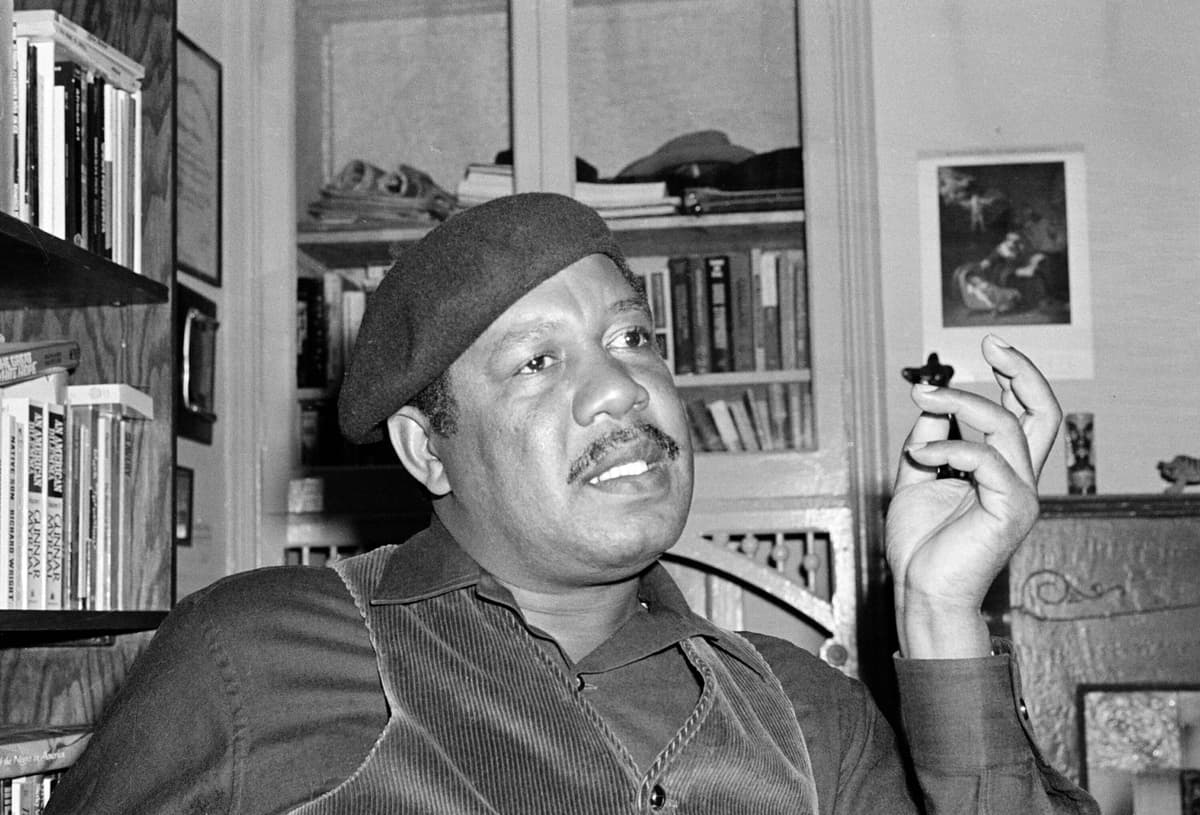As Yoknapatawpha Was to Faulkner, So Cherie Quarters Was to Ernest J. Gaines
Ruth Laney’s book is as much about her efforts to preserve what remained of Cherie Quarters as it is a biography of Gaines. It’s a detective story, and she is able to recreate a significant part of a lost world.

‘Cherie Quarters: The Place and the People That Inspired Ernest J. Gaines’
By Ruth Laney
Louisiana State University Press, 304 pages
Ernest J. Gaines (1933-2019), winner of the National Book Critics Circle Award for his novel “A Lesson Before Dying” (1993) as well as a MacArthur Foundation fellow and National Humanities Medal awardee, is best known for “The Autobiography of Miss Jane Pitman” (1971), the story of a Black woman raised in slavery and living through nearly a hundred years of history, an epic dramatized in 1974 to great acclaim with the help of Cicely Tyson.
Ruth Laney first met Ernest J. Gaines in the early 1970s, interviewed him for the Southern Review, produced a documentary about him, and spent decades studying Cherie Quarters, a small community in Louisiana where Gaines grew up and often returned to after moving away to San Francisco.
Situated in Point Coupee Parish, Cherie Quarters was the site of rickety slave cabins that still existed during Gaines’s lifetime, part of the nearby River Lake Plantation dating back to the 1840s. Gaines treated the place of his origin with the same reverential but also critical care that William Faulkner devoted to his beloved Yoknapatawpha.
While much of what Gaines describes in his fiction was allowed to rot, the remnants of Yoknapatawpha — that is, the sites of Faulkner’s mythical county based on the Lafayette County, Mississippi, where the author grew up and remained for most of his life — are meticulously preserved today in his home, his farm, and in museums.
Ms. Laney’s book is as much about her efforts to preserve what remained of Cherie Quarters as it is a biography of Gaines. Because the white owners of Cherie Quarters saw only issues of liability in the decrepit cabins, the result was demolition by neglect, as Ms. Laney points out.
“Cherie Quarters” features a biographer’s quest to know her subject and his world through on-site visits, photographs, interviews with the Gaines family and community residents, and inspections of public and private records. Ms. Laney is able to recreate a significant part of a lost world.
This biographer’s book is a detective story, getting the sometimes grumpy Gaines to talk and dealing with community members who, by turns, welcomed and were wary of Ms. Laney’s investigations. She has to grapple with local politics in a community divided about what to do with the slave cabins, even as it professes to honor the work of its most famous resident.
Reading Ms. Laney’s poignant account of Cherie Quarters — a lost world of inhabitants who had little access to adequate education or medical treatment, who worked for wages or sharecropped for much less than their white neighbors would accept — I am reminded of Roman Vishniac’s films and photographs of Jews in Central and Eastern Europe before the Holocaust.
Although Gaines could be bitter about the treatment of Black people, in the main his fiction is not an indictment of racism but, on the contrary, a celebration of the sense of community that Cherie Quarters managed to instill in him.
Devotees of Gaines’s fiction will be delighted to discover in Ms. Laney’s book the models for places and people in his fiction. In what might be called a sociological biography, Ms. Laney explores the land and humanity that helped launch Gaines and saturate his imagination.
As to Gaines himself, by the age of 16, Ms. Laney explains, he began to write fiction, knowing that it was no good and that it would probably take him a decade, which it did, before he would begin to produce work of value. Along the way he acknowledged the help of many people, white and Black, who made his career possible.
Gaines was single-minded about his work to the point of sometimes seeming cruel and neglectful of the needs of those close to him. Ms. Laney does nothing to excuse an author who nearly always put his work first and worried about interruptions of any kind.
Gaines kept a picture of Faulkner on the wall of one of his residences, and like that august predecessor, Gaines thought of his art as a kind of keystone in the universe that depended on him to get the work done.
Mr. Rollyson is the author of “William Faulkner Day by Day.”

